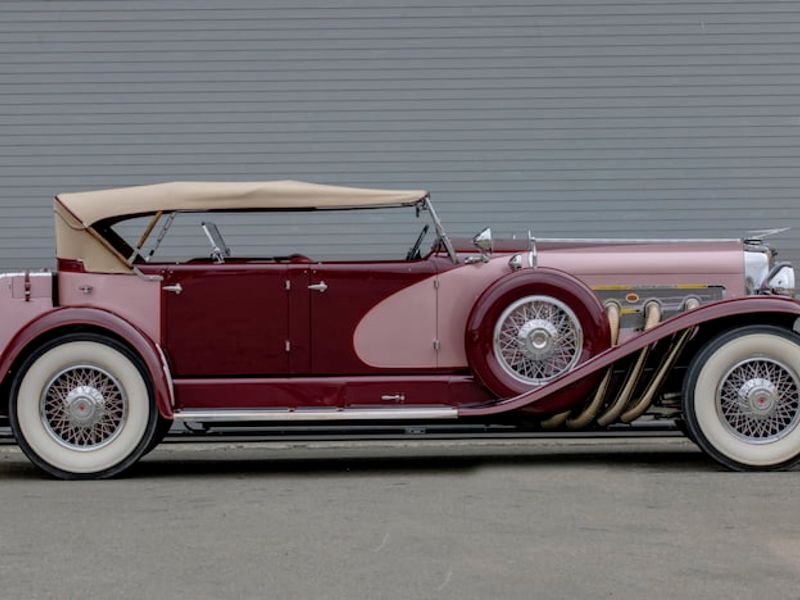
Soon after purchasing the Duesenberg Motor Co. in 1926, Errett Cord gave founder Fred Duesenberg simple instructions when designing the Model J: Build the best flagship car in the world. It had to have enough power to move a fully loaded, multipassenger Duesenberg with luggage for a family faster than any other automobile on the road.
When Duesenberg, an engine builder in the 1910s who gained fame with his brother Augie at the Indianapolis 500, introduced the Model J on Dec. 1, 1928, at the 1929 New York Auto Salon, New York City was stunned. With 265 hp, its dual overhead camshaft, 420-cubic-inch inline eight-cylinder engine was twice as potent as the next most powerful American automobile.
It was the greatest car produced in the 1920s, Hagerty once said, with an engine bay that was a work of art with a “field of polished alloy and bright green paint.”
The short wheelbase chassis measured 143.5 inches. Four wheel hydraulic brakes balanced the massive engine’s power. No expense was spared in the exotic materials, methods and processes used to build every Model J in an Indianapolis plant.
It was the fastest and most expensive American car of its era, made more so by the fact that it was supplied only as a rolling chassis so customers had to order a bespoke body from the coachbuilder of their choice.
A bare chassis was priced at $8,500, or some $120,000 today. In 1932, the price rose to $9,500. Buyers had to spend another $5,000 to $10,000 for a custom body. During the 1920s and 1930s , the world’s top coachbuilders vied for the chance to display their design and engineering talents on the Duesenberg Model J chassis.
The Model J would become a status symbol of the rich and famous. Owners included Al Capone, Greta Garbo, Howard Hughes, Mae West, Clark Gable and European royalty. Jay Leno is among today’s Model J collectors.
The Depression eventually hit the company and Duesenberg went out of business in 1937.